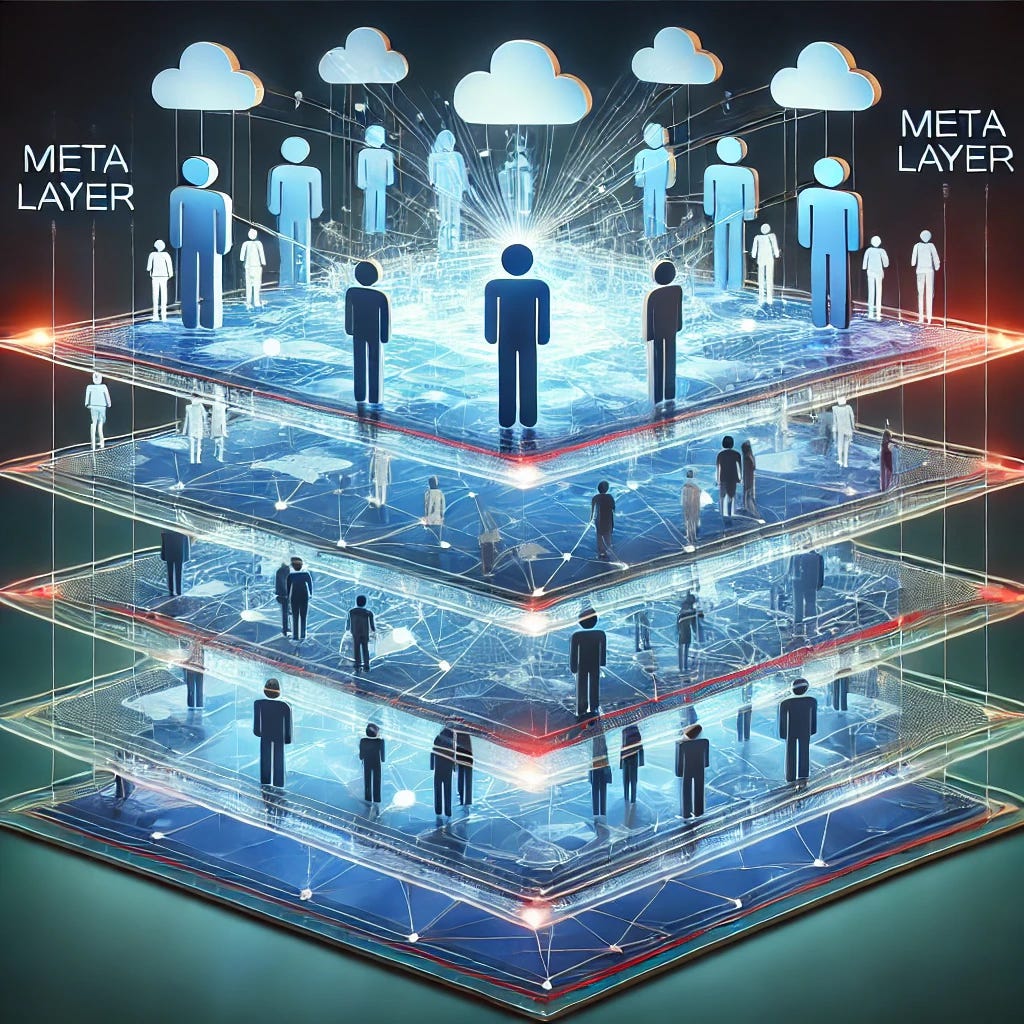In a world increasingly defined by our digital interactions, I’ve become convinced of something profound: There are hundreds, if not thousands, of people we are meant to meet, reconnect with, or collaborate with in the digital realm—people whose contributions could help shape the course of our lives for the better. We call this Digital Destiny Theory.
These connections are not random; they are rooted in shared passions, purposes, and experiences. Yet, they often remain unrealized in the physical world. We’ve all had moments when we reconnect with someone and say, “It’s a small world!” But the digital world is vast, filled with people we’re destined to cross paths with, people who are thinking the same thoughts, reading the same articles, and engaging with the same ideas. What if we could meet them?
Right now, we exist in parallel, inhabiting the same virtual spaces—reading the same books, donating to the same causes, or even playing the same games—without ever realizing how close we are to making life-changing connections. The internet offers us infinite opportunities, but the way we engage with it keeps many of these connections just out of reach.
The Meta-Layer: The Future of Serendipity
The potential to make these connections exists in what I think of as a meta-layer—a conceptual space above traditional webpages. This layer would allow us to engage with others in real-time, creating a digital cafe where serendipitous meetings and meaningful collaborations happen naturally. Imagine visiting a website and not just consuming content, but discovering that a friend—or even a stranger with the same interests—is on the same page as you, ready to discuss, share, or collaborate. This kind of spontaneous interaction would mirror the way we connect in the real world when we find ourselves in the same space as a kindred spirit.
Right now, the Metaverse is in its infancy, and while it offers promise, it lacks the safety and trust necessary for meaningful connection. What we need is a safer, more intentional digital space. The Metaweb, an idea developed by Bridgit DAO, offers just that—a decentralized layer that sits above the internet as we know it, fostering connection, trust, and collaboration. This Metaweb can drastically reduce disinformation, scams, and harassment while offering a space for genuine human connection.
Meeting People in Digital Spaces
The way we use the internet is evolving. We no longer just consume information; we participate in it. The Metaweb could serve as a kind of social glue, allowing us to interact not just with content but with each other—forming meaningful, productive relationships in spaces we already inhabit. Much like meeting someone in a coffee shop or a bookstore, where shared interests spark conversations, this meta-layer could enable us to meet people based on what we’re doing and thinking in that moment.
This concept taps into what Gary Kreps has described as relational computing—using technology to address core human needs such as affection, belonging, and collaboration. Until now, computing has focused on organizing information, solving problems, and boosting efficiency. But the next step is to use it to foster deep, relational connections. Will Schutz’s theory of interpersonal needs—which focuses on affection, inclusion, and control—can provide a strong foundation for this shift.
Imagine logging onto a website and discovering that a friend is reading the same article or watching the same video. This could open up new possibilities for learning, collaboration or simply deepen the bonds of friendship. We are meant to meet in digital spaces because, in today’s world, it’s where much of our intellectual and emotional engagement takes place. Why not make it easier to connect in those moments?
Creating Safe, Meaningful Connections
As we move into this future, safety and trust will be key. The Metaweb offers the potential for decentralized verification and contextual information, helping to create a safer and more accountable online environment. This will reduce the dangers of scams, false information, and malicious behavior, making the digital world a place where real, meaningful connections can thrive.
Cindy Mason’s work on artificial compassion offers a glimpse into what this future could look like. As we move toward a more people-centered internet, the role of technology will expand beyond efficiency to fostering the deep human values of love, empathy, and connection. In this world, technology won’t just help us achieve more—it will help us become more.
The digital realm can and should be a place where we meet those who will walk with us on our journey, offering support, ideas, and collaboration. Through a meta-layer, we may finally unlock the potential of digital spaces to connect us in the ways that truly matter.
The Future of Digital Serendipity and the Meta-Layer
Whether through the Metaweb, a meta-layer, or new digital spaces yet to emerge, I believe the connections we are meant to make are out there, waiting to happen. These are the people we are destined to meet—individuals who will help us grow, collaborate, and find purpose in this vast digital world.
As we look toward this future, the Meta-layer initiative offers a promising path forward, transforming the digital realm from a space of mere information exchange to one of meaningful human connection. This conceptual layer, existing above traditional webpages, opens up new opportunities for safe, accountable, and serendipitous encounters. It allows us to interact in real-time with others who share our passions and collaborate in ways that enrich our lives. By harnessing this next frontier of the internet, we can shift from passive digital consumption to active participation in a global community built on shared ideas and purpose.
The Meta-layer is not just a vision but an invitation. I encourage you to explore and engage with this initiative. What features and properties do you think would create the most meaningful and safe connections? Your input can help shape this space, ensuring it serves as a platform for collaboration, compassion, and collective growth.
Join the conversation and share your thoughts here: bridgit.io/meta-layer










